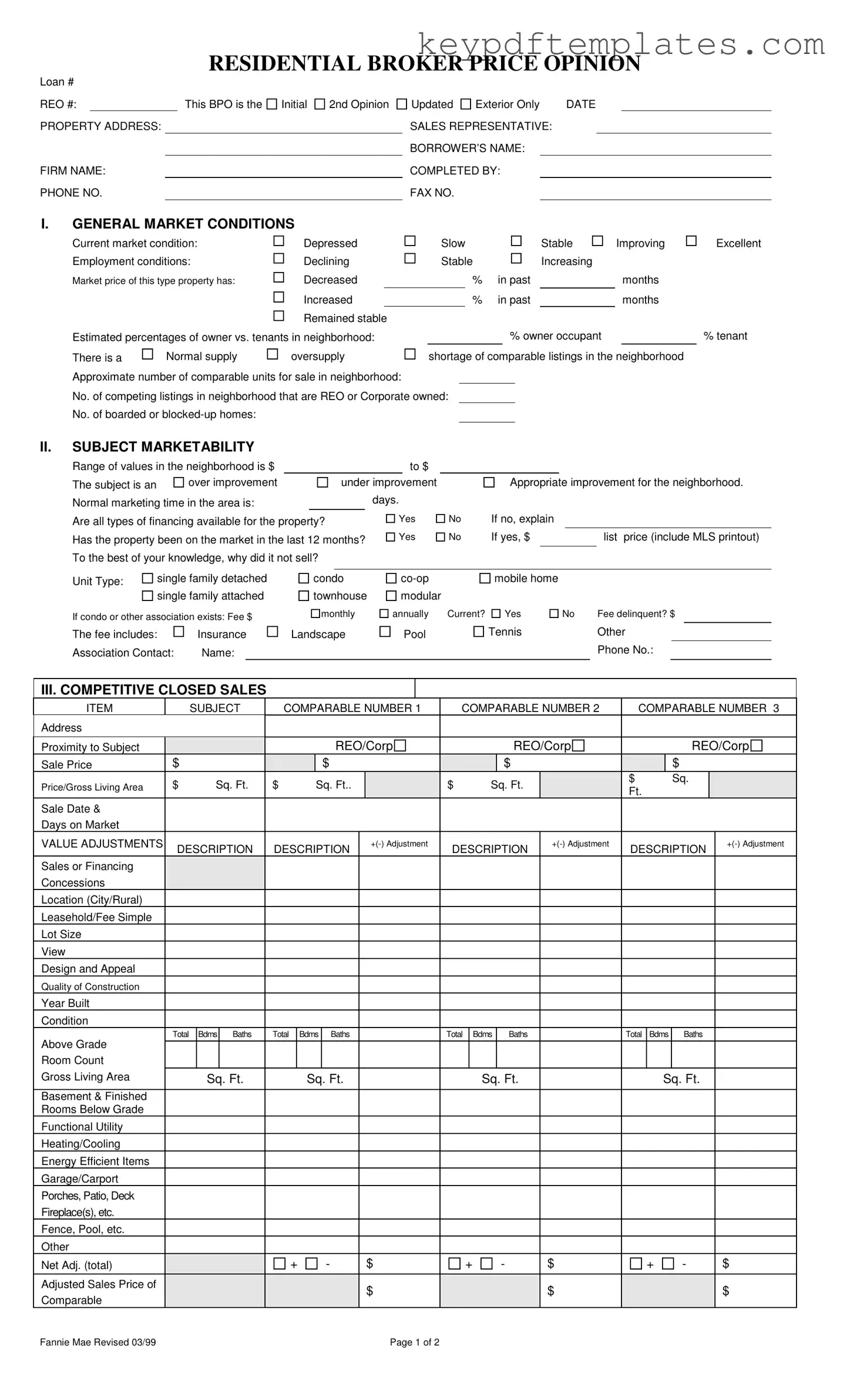Get Broker Price Opinion Form
The Broker Price Opinion (BPO) form serves as a critical tool in the real estate market, providing an estimate of a property's value based on various factors. Typically used by lenders and real estate professionals, the BPO assesses current market conditions, comparable sales, and property characteristics to determine a fair market price. By evaluating these elements, the BPO aids in making informed decisions regarding property transactions and investments.
Modify Document Online
